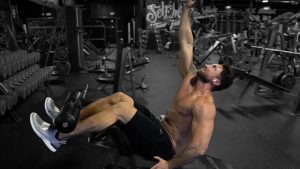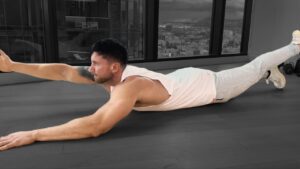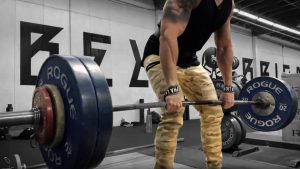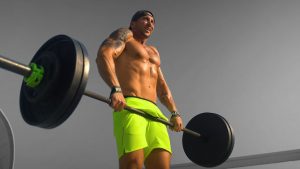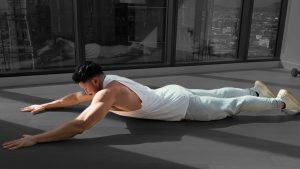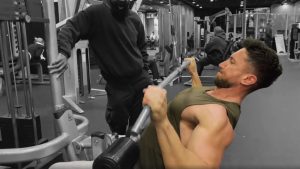The barbell overhead press (or "military press") is a powerhouse of an exercise that works the muscles of the shoulders and upper back.
When executed with precision and technique, it can not only define your shoulders but also shape your upper back to give you a broad, balanced physique. This total-body lift effectively develops the shoulders and upper back, two of the most vital areas of the body for strength and muscle tone.
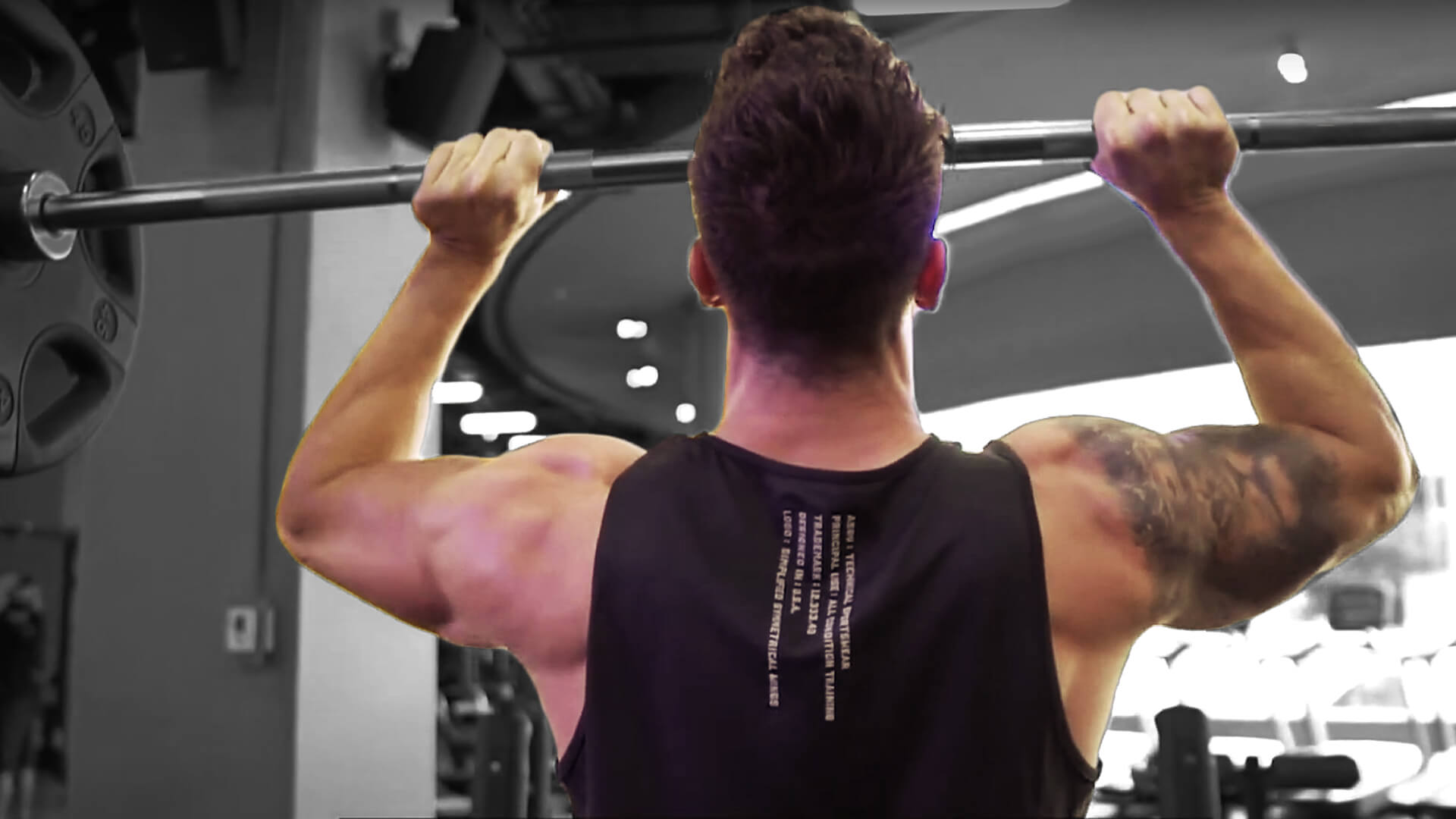
Overhead pressing strengthens the entire body. The press isn't just for the shoulders and arms—the standing overhead press is also a great way to work the abdominals and hips, as well as helping to improve your leg strength.
The overhead press may be the most effective exercise for developing bigger shoulders, upper back, and triceps. It's a favorite of fitness enthusiasts because it's an incredibly effective way to develop these muscle groups. The weight you use for the press must be heavy enough that your muscles won't tire out and at the same time light enough that you can complete 8-12 reps in an extended set.
Before You Perform The Overhead Press: Safety First!
You'll want to stay away from the overhead press if you're new to strength training because of its heavy loading and nervous system demands. While it's one of the most impressive lifts and it's fantastic for building your upper body, you need a solid and established fitness baseline and a grounded education in strength training before making a foray into the military press. The truth is, some folks' bodies just can't handle training with heavy weights overhead without injury.
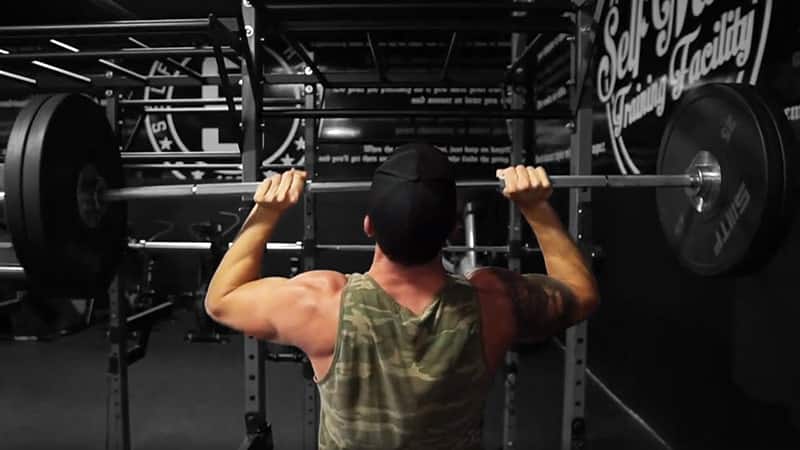
The barbell overhead push press and other overhead press variations can be dangerous when performed by weightlifting amateurs. If you don't have the proper upper body strength to manage the weight, you can cause serious injury on your very first rep. Even strong lifters must take great care to perform the overhead press with the appropriate technique to ensure that they don't cause muscle strain on their neck, shoulder blades, arms, pectorals, or core muscles.
Most people can't afford a personal trainer, but there are some exercises you can do to check your core, arm, and shoulder strength to find out if you're ready to start adding the overhead press to your lifting regime.
Shoulder Blade Touches
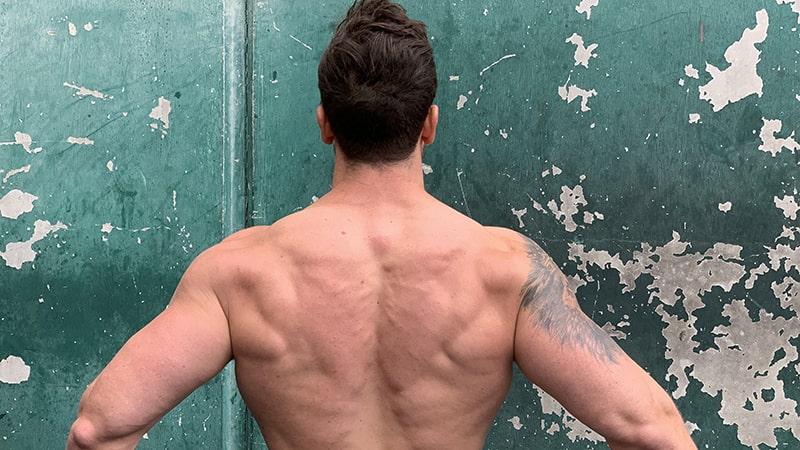
Stand straight with your arms at your sides and feet at shoulder-width apart. Reach both arms behind you and touch the tops of your shoulder blades. If you can do this without touching anything other than your arms, then you have the flexibility to perform the overhead press.
If you can't, you can still perform this exercise with dumbbells or kettlebells, but don't pick up the bar quite yet.
Overhead Reach
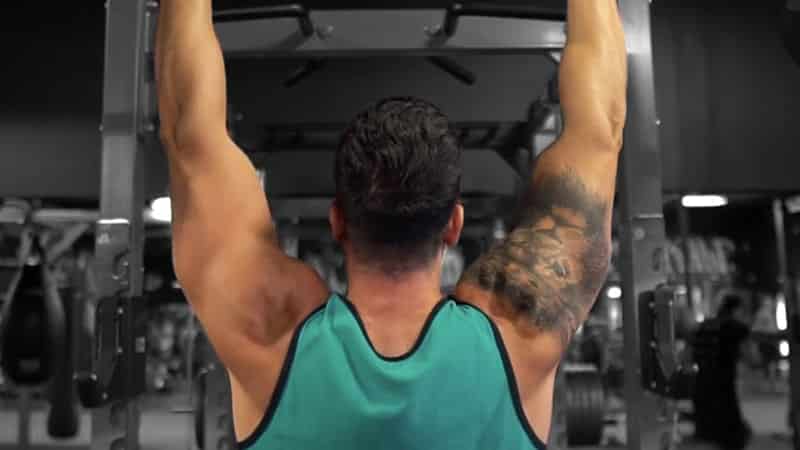
Stand in front of a mirror, arms at your sides. Raise both arms overhead. If you can, raise both arms parallel with your ears—without your ribs moving, and without anything else moving.
To pass this test, you need to be comfortable while standing straight with your arms upright and make sure your ribs are still.
If you've failed, don't overanalyze why. Just attack your next workout with more power and precision. Don't hit the bar just yet, but you can start trying a light overhead dumbbell press (or kettlebells).
When To Use The Overhead Press
A multijoint movement should always be done first in your workout. While you don't necessarily need to perform overhead pressing first in a workout, it's best to do this heavier exercise as your main lift especially if you're just starting out.
Depending on the lift variation, place it as an accessory movement or a support exercise for your primary lifts. This heavy exercise is taxing on your CNS because of its full-body nature and relatively heavy loading.
Planning Your Overhead Press
Form is essential when it comes to complex movements, especially when lifting weight that's too heavy. When form breaks down during a training session, injuries increase the likelihood of poor results. As a result, athletes are better off choosing sets and reps schemes that allow for form and posture maintenance.
The ideal rep range for overhead pressing is 3-8. Any more or any fewer reps and you risk breaking form, muscle strain, and fatigue. This has been proven time and time again in studies on overhead press form with novice to advanced lifters. On the other hand, 3-8 rep ranges are also known for increasing strength gains over longer durations of training.
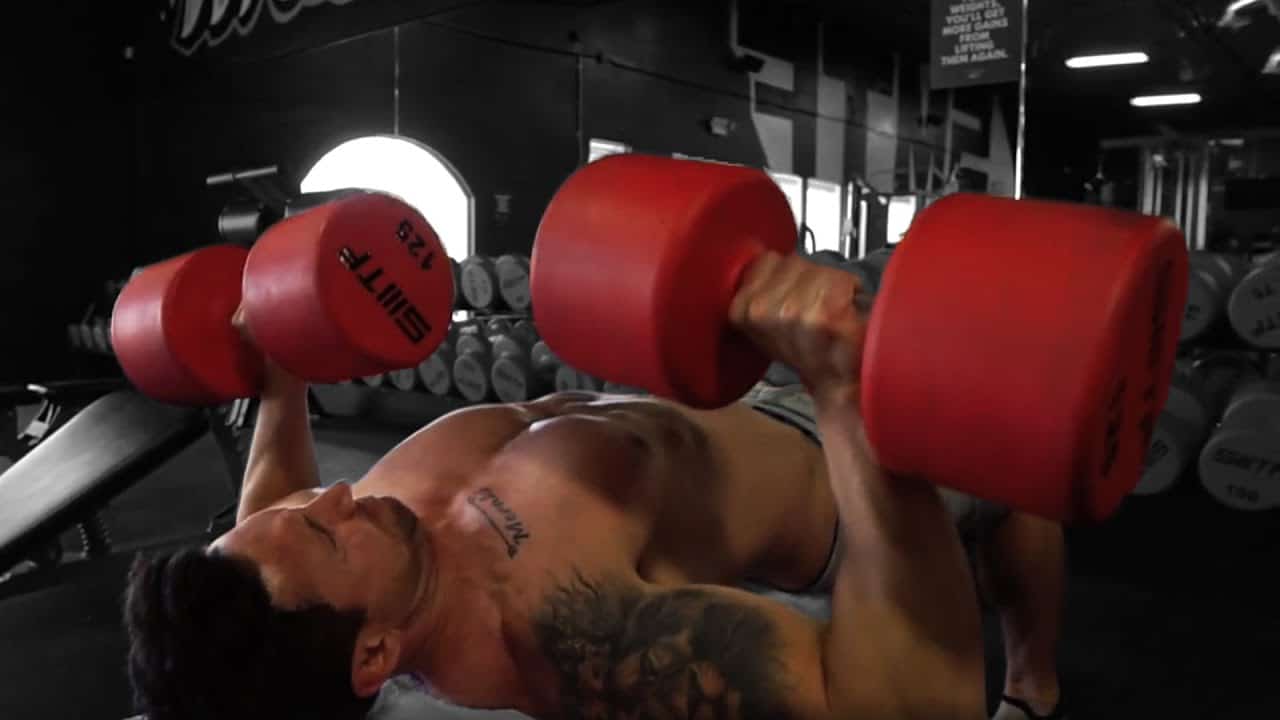
Sometimes increasing the number of reps can lead to plateaus rather than progress. If you're going over your 8-rep goal, try adding more weight or reducing rest time. As with any workout, training balance is typically the answer more than going to extremes.
For many new lifters, dumbbell and kettlebell variations are their main lift. The overhead press is just one example of the many lifts that can be done with a lighter load and easier form.
Perform dumbbell or kettlebell overhead press sets in the 5-12 rep range with lighter loads, and you'll give your body the time it needs to grow. The 5-12 rep range is ideal for these exercises since it builds strength without setting you back in terms of your range of motion or exertion.
How To Perform The Overhead Press
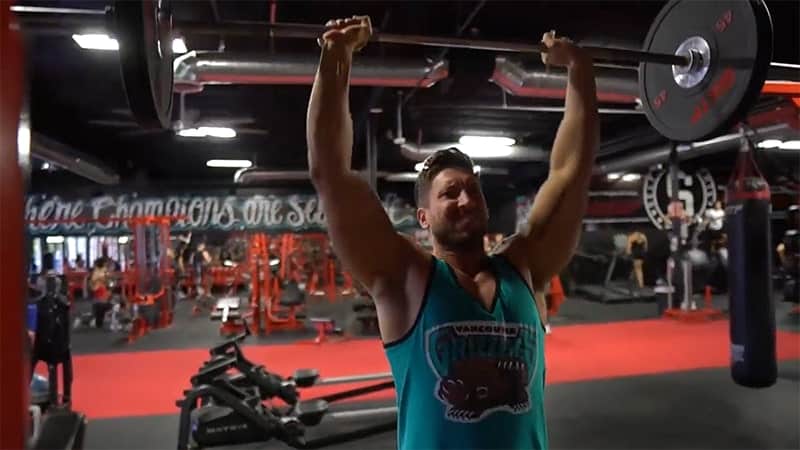
To perform an overhead press with proper form, stand with the bar on your front shoulders. Position the bar on your shoulders, and grab it with an overhand grip, just outside shoulder-width apart. Straighten your arms until you are in a rigid pressing position, elbows locked at the top, keeping a straight bar path. At the top, hold the bar for a second before lowering it back to your front shoulders.
The overhead press with dumbbells and kettlebells is similar in execution but with one slight difference. The hands start out in a neutral position at the bottom, like a dumbbell press. Rotating the arms parallel to the ears as you press makes use of the shoulders' entire range of motion. The rest is the same. As the weight is moved up and back, the elbows extend as they are pressed up and back.
Overhead Press Form And Stance
When doing the overhead press, your heels should be under your hips. This means that you should have a narrow stance. But your heels shouldn’t be touching. Stand similarly to how you stand when you perform the deadlift.
Lower Body
Staggering your feet might improve your overhead press, but it can also hurt your lower back and hips. Overhead press with your feet parallel and shoulder-width apart to evenly distribute the pressure on your back and hips.
You can turn your feet out slightly, but make sure that they are aligned horizontally when you look down. Don’t stagger your stance by putting one foot forward.
Your feet should be flat on the floor when you overhead press. This increases body balance and allows you to use more of your body weight to lift the bar. To optimize your bar control, keep your forefeet, heels, and toes firmly on the floor.
Avoid lifting your toes or raising your heels. Use only the muscles in your feet and legs to overhead press, not momentum from your upper body.
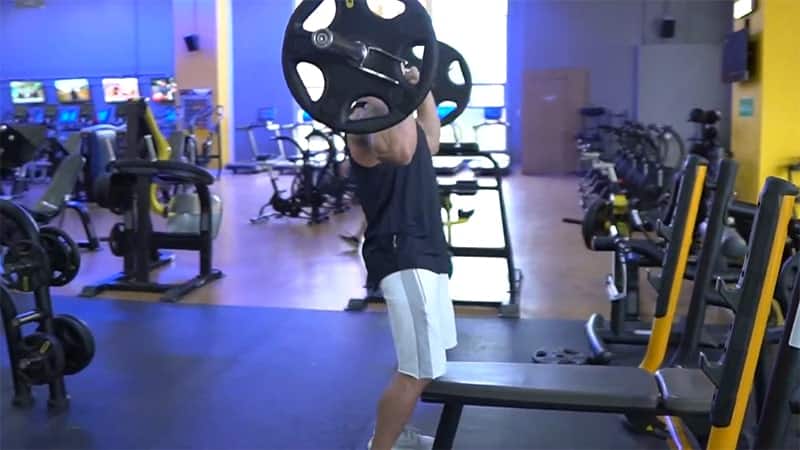
Keep your legs straight and squeeze your glutes. Your shoulders are doing the work, not your knees. Hyper-extending your knees is cheating — you’re taking the work away from your shoulders.
Squeeze your quads and keep your legs straight. If your knees hurt, you’re probably hyper-extending. If you still can’t lock your knees, decrease the weight by 10%.
A push press is not the same as an overhead press. The push press uses your stronger hip muscles to drive the bar off your shoulders. It allows you to press heavier weights, but it doesn’t work your shoulders like an overhead press does.
If you bend your hips while doing an overhead press, you will cheat yourself out of better results. You should never cheat during a workout. Think about squeezing your glutes to keep your hips straight.
Grip
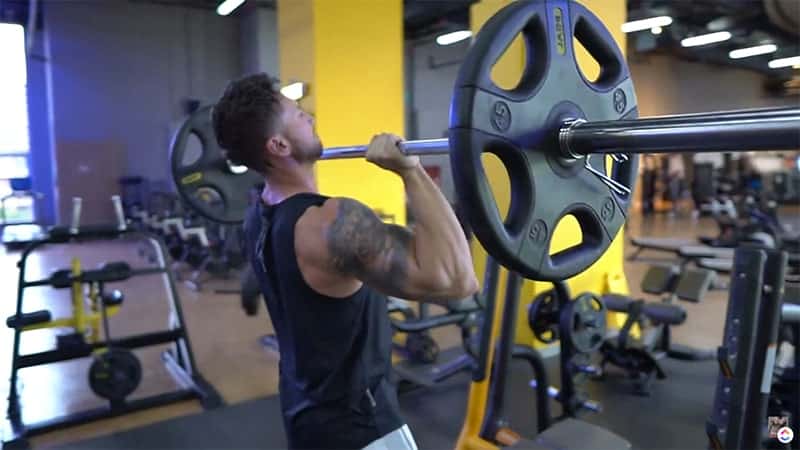
Your grip is very important for the overhead press. If you want to do this exercise safely, you must wrap your thumbs around the bar.
This way, the bar cannot slip out of your hands and hit you in the head. It also makes you stronger because you get to squeeze the bar harder.
This helps engage your arms, shoulders, and chest muscles more — making them stronger too. Plus, a full grip allows you to overhead press more weight without causing bad form.
Should You Stand Or Should You Sit?
What's the difference between doing this movement standing vs. sitting? When you do barbell movements with weights, your body must use stabilizer muscles in each shoulder joint to keep each body part pressed against the weight at all times, or you'll experience a painful injury. Strong, stable shoulders help prevent you from bending over during lifts.
Standing Overhead Press
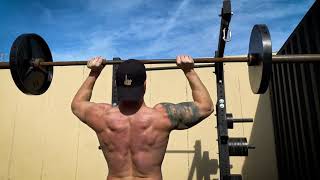
The standing barbell press takes more total-body strength because it builds more core stability, trunk stability, and tension. It also builds more shoulder strength. However, if you're already in fantastic shape and strong, the seated overhead press will build a higher percentage of your overall upper-body strength, but not necessarily more overall strength.
Standing overhead presses require more core stability and total-weight tension than the seated variety because your hips and legs need to be engaged to prevent you from bending over.
Seated Overhead Press
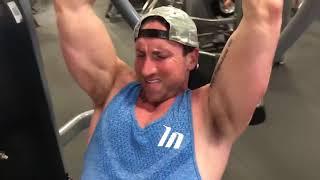
Seated overhead presses are best for those with stronger core strength and less flexible joints. They're typically easier to perform since you stabilize your body with the bench.
This makes them a good choice for lifters who are newer to weightlifting exercise and those who aren't in the best of physical shape. They're also the best alternative for lifters with lower-body disabilities who want to utilize the ultimate upper-body lift.
Muscle Groups Worked By The Barbell Overhead Press
The overhead press utilizes a variety of muscles to lift the weight. Your shoulders and arms are the prime movers that press the bar overhead. But everything between your shoulders and the floor should stay tight to balance you as well as keep you from dropping the weight on your neck or elbows. The overhead press concentrates several muscle groups all at once to build strength and power.
Arms
Straightening your elbows works the muscles on the backs of your arms, your triceps. Their size makes them stronger than any bicep. Your forearm muscles also jump into action to hold the weight.
Back & Shoulders
To overhead press, lift the bar with straight arms so that your feet don't leave the floor. This targets the muscles in your shoulder: your front, side, and back deltoids. Muscles are developed evenly with heavy weights so that you build wider shoulders.
Core
Your core muscles are the foundation of a strong body. They stabilize your torso while you press the bar overhead. Stronger abs are leaner abs, especially when paired with a balanced diet.
Legs
Your legs balance your body while your arms and shoulder press the bar. This works your hips, thighs, calves, and ankles. The overhead press doesn't work these muscles quite like squats because your legs don’t move during your reps. Instead, they stay straight. They have to support the heavyweight of the bar. If you want to work your lower body, squats are a better choice.
Important Safety Considerations For The Overhead Press
Any exercise can cause unnecessary strain or injury when done incorrectly, but the overhead press is a full-body workout using a heavy free weight overhead. This makes it one of the more hazardous lifts you can perform, and a number of things can go wrong if you're not adequately prepared or if you don't have enough strength to perform the overhead press correctly.
Before adding the overhead push press to your workout routine, perform the safety checks listed above and consider these safety risks associated with the lift.
Watch Your Shoulders
The overhead press has been proven beneficial for shoulder health, but you need a good form. It strengthens your shoulders and rotator cuff muscles. These muscles secure your shoulder joints and prevent dislocations. Good form also prevents muscle imbalances in the bench press by strengthening your rear shoulder muscles. However, poor form will hurt your shoulders. The bench press is a great exercise to do for strong shoulders that will then help with your overhead press form.
Do shoulder shrugs. Start by holding the bar up high with your elbows 45° in. Don’t use a grip wider than this or your elbows will flare like you do on the bench press. Press the bar in a vertical line until your arms are straight at the top. To finish the rep, lift and tilt your shoulders. The barbell should stay on a straight bar path directly over your shoulder joint while you do this.
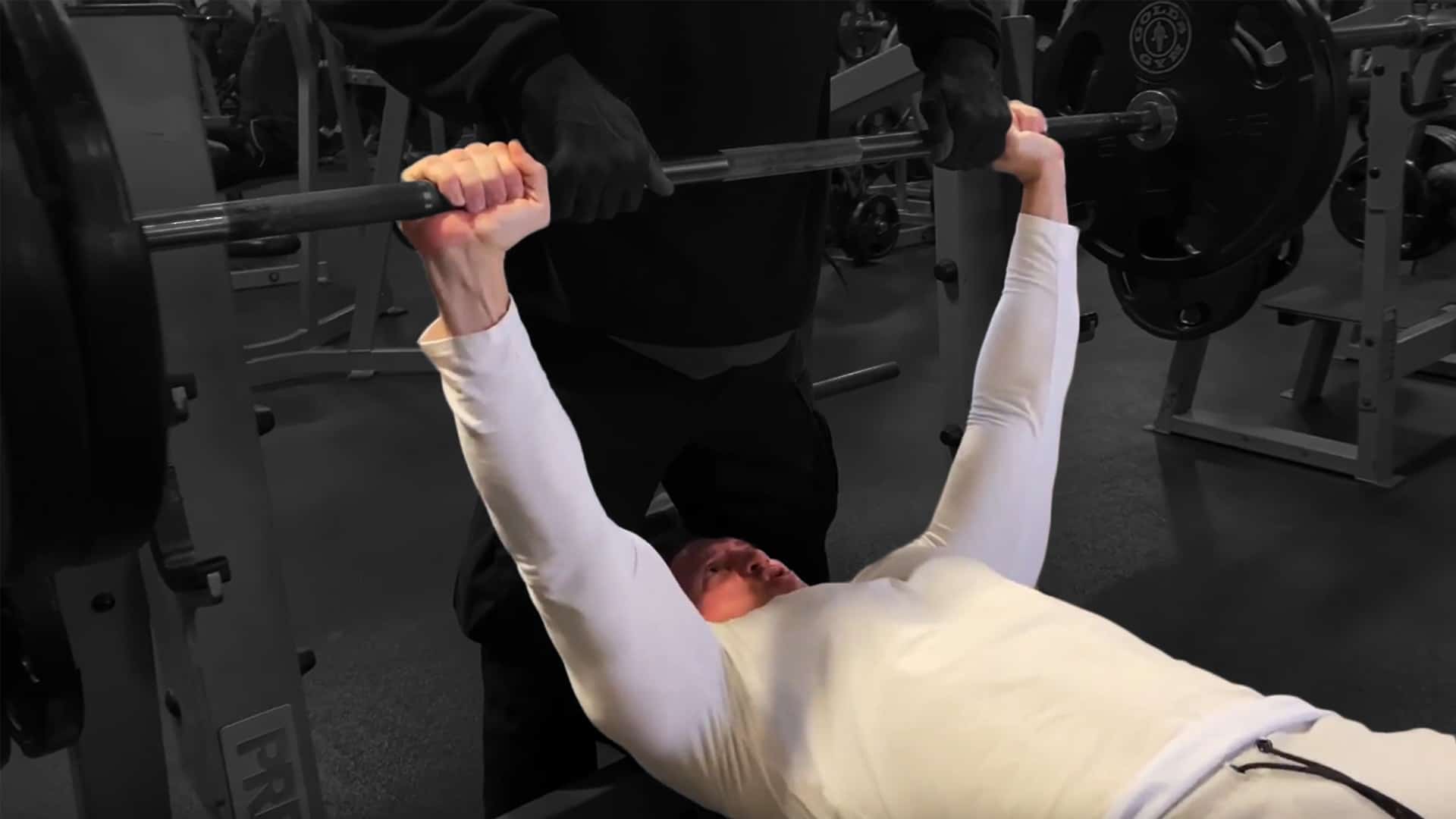
Shrugging is a key to strong shoulders. This will activate the trapezius muscle, rotating the shoulder blade out and lifting the bony process of the upper arm bone (humerus). This creates space between the top of your humerus and your acromion, which can alleviate shoulder pain and decrease inflammation.
If you don’t shrug at the top of your bench press, you are putting yourself at risk for injury.
Be Ready To Drop The Bar
People are scared of overhead pressing when they’ve never done it before. They think that the barbell will fall on their head and crush them before they even get a chance to finish the lift. However, this is a myth. A weight that is too heavy for you to control won’t go as high as your head. You'll fail at the bottom because it's too hard.
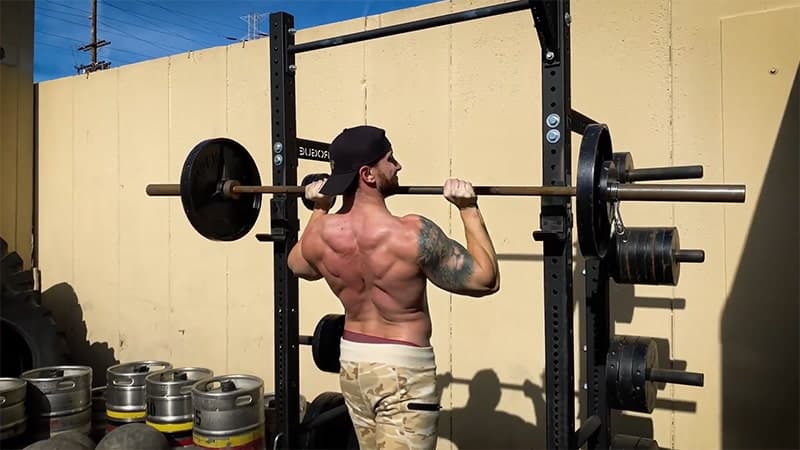
When doing the overhead weight press, there are only two ways you can drop the bar on yourself. The first is to use a thumbless grip. If this happens, the bar will fall out of your hands and hurt you. It’s better to have a full grip with your thumbs wrapped around the bar.
Another way to drop the bar is to not lock your elbows at the top of the move. The weight will collapse over your head if you fail to lock your elbows. Always lock your elbows at the top of the overhead press.
You don’t actually need to overhead press inside the Power Rack with safety pins set. You can simply go right into your shoulder press when you fail a rep. If you prefer to overhead press inside the Power Rack with safety pins set, arm yourself with confidence and do it.
Benefits Of The Barbell Overhead Press
You don’t need to isolate your shoulder muscles with lots of different exercises. The overhead press gets the job done. It works your entire shoulder girdle evenly, allowing you to lift heavier weights.
The overhead press strengthens your rotator cuff muscles. It's a safer and more effective way to prevent and fix shoulder injuries than internal and external rotation exercises with dumbbells. Plus, unlike the bench press, it strengthens the back of your shoulders, not just your chest.

